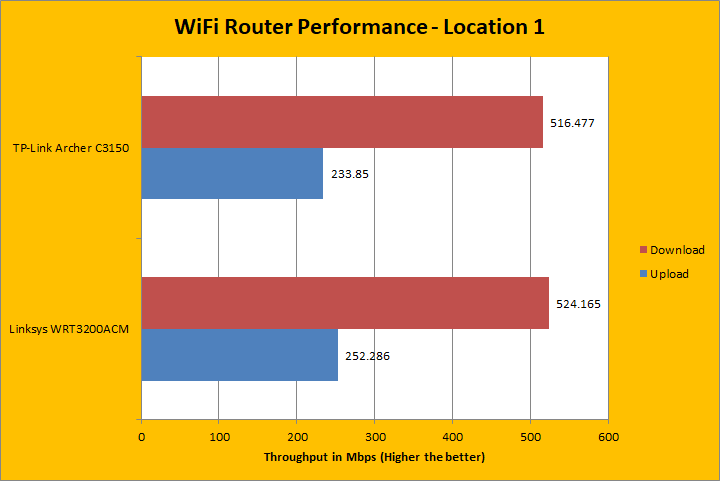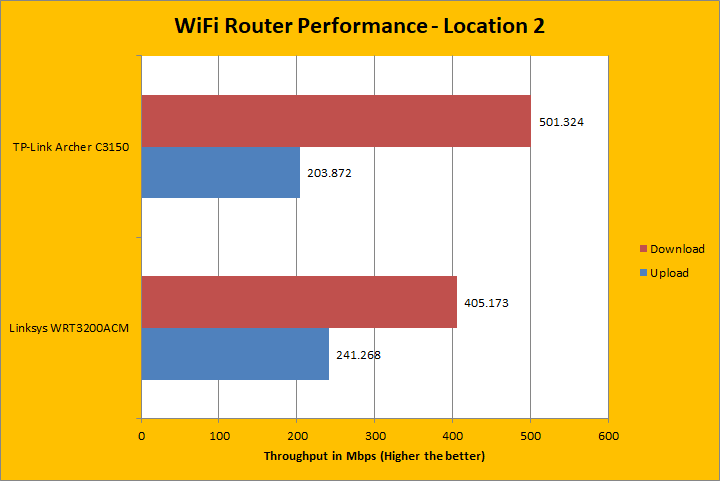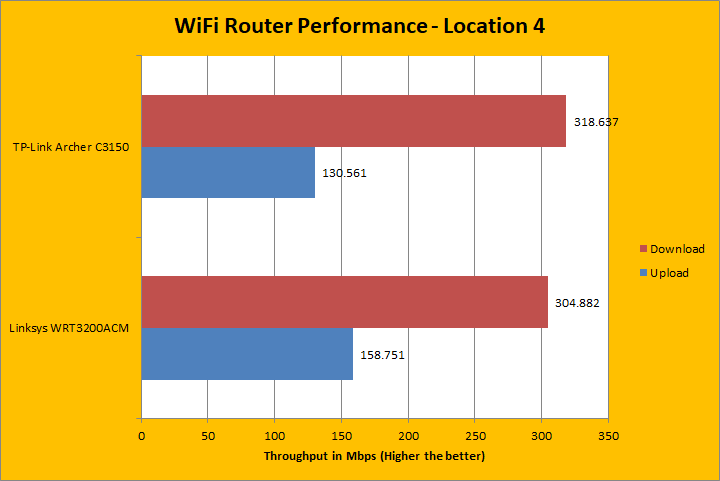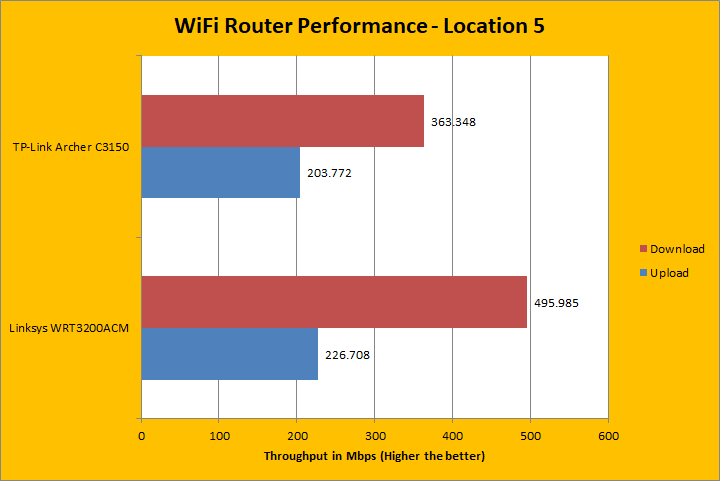Page 4 - Performance Tests

For the tests, the wireless router was placed in the middle of the main floor of my house. An ASUSTOR AS3202T network attached storage equipped with a single Seagate NAS HDD ST4000VN000 4TB was connected to the router via a CAT5e cable on a Gigabit Ethernet connection. On the client side, a 2015 13" Apple MacBook Pro running Totusoft's LAN Speed Test application was used to transfer 500MB test files to evaluate real-world throughput. In our results, "upload" is defined as data transfer from the client to the server via the wireless router; conversely, "download" is defined as data transfer from the server to the client via the wireless router.
A brief description of the test locations is as follows:
- Location 1: Line of sight to router, approximately 2m distance
- Location 2: Non-line of sight to router, bedroom, one floor up
- Location 3: Non-line of sight to router, driveway in front of attached garage, same level
- Location 4: Non-line of sight to router, near end of backyard, one floor down
- Location 5: Non-line of sight to router, open area, one floor down
Compared Hardware:
- TP-Link Archer C3150 (AC3150)
- Linksys WRT3200ACM (AC3200)





Since wireless channels are generally characterized by path loss, large scale fading, and small scale fading, the router was tested in five different locations described above to comprehensively measure its true throughput performance. This includes a combination of line of sight and non-light of sight spots, different distance and positions relative to the router, as well as shadowing caused by objects between the laptop and the router. In order to overcome inconsistencies due to small scale fading, a relatively large 500MB test file was used. Furthermore, movement of people and objects within the vicinity of the devices during testing was eliminated whenever possible.
In the first location, both the Linksys WRT3200ACM and TP-Link Archer C3150 provided very similar performance, albeit with a slightly better result from the Linksys router. This is as expected, as there were practically zero obstacles between the routers and the tested device. In the second location, the Archer C3150 had the definite download advantage, though it was slower in upload by a noticeable margin too. As this location was located directly above the router, this shows the antenna array strength above the router. The third location shared similar results between the two routers, though the Archer C3150 provided slightly better numbers. As Jonathan Kwan pointed out in his article of the Linksys WRT3200ACM, this is probably due to the lower RF attenuation over distance from the Archer C3150 in terms of its network split of 1000Mbps 2.4GHz and 2167Mbps 5GHz band configuration. As the router and the test device was separated by a thicker garage wall, lower frequency wavelengths can pass through walls easier and propagate longer distances. In comparison, at the fourth location, which is a level down and again not in the line of sight of the router, we have only slightly slower numbers between this and the previous location. Once again, the Archer C3150 is a bit faster in the download department, but the WRT3200ACM is faster for uploads. Finally, in the fifth location, which was right under the router, the Linksys WRT3200ACM proved to be much more capable than the Archer C3150, besting it in both download and upload speeds.
Overall, both of these routers are excellent routers, with the TP-Link Archer C3150 peaking at 516Mbps in the most optimal case and nearly reaching this mark from a floor above. Download speeds never dipped below 300Mbps, which is great to see. Upload speeds of the Archer C3150 did seem to be slightly lacking compared to the WRT3200ACM, as they were lower than the Linksys in four of the five locations. Both of these routers also show their strengths in different areas, which is unsurprising, but the results are great nonetheless.
Page Index
1. Introduction, Packaging, Specifications
2. Physical Look - Hardware
3. Configuration and User Interface
4. Performance Tests
5. Conclusion





